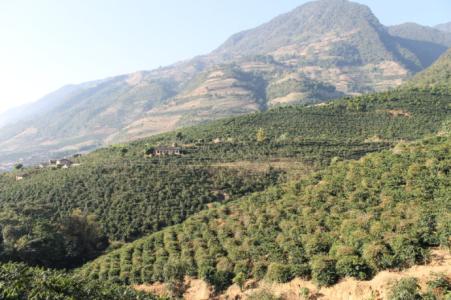A brief introduction to the steps of roasting coffee beans
A brief introduction to the steps of roasting coffee beans
In the previous stage, a thermal impulse was created to quickly produce the temperature environment required for caramelization to react with Mena, between 170oC and 205oC. (caramel melting point is 186 °C)
At this point, the water in the coffee cell continues to evaporate, causing a chemical reaction, the sugar in the cell is caramelized and the amino acids Mena with carbohydrates. At this time, we must pay full attention to the change of furnace temperature and control the fire in time. At this time, the acidic components have not been completely degraded, and those who like sour taste will be baked before the second explosion (fine-tuning stage).
The choice of the material of the inner pot is the most tangled place when making the product. in the initial design, because the stainless steel material can be rolled up and welded, it is convenient to manufacture, while the cast iron material has a great initial investment, so stainless steel has become a very tempting choice. but after the test, it is found that the stainless steel inner pot can not evenly transfer heat to the whole inner pot, resulting in some points that will overheat and scald coffee beans. A good stainless steel pot is a composite structure, with more than three layers at the bottom, with an outer layer of stainless steel at the bottom, with a copper plate in the middle as an important heat conduction layer to disperse the uneven heat energy at the bottom of the pot, so that the internal stainless steel layer can be heated evenly. But this kind of technical solution is used in the inner pot of the roaster, we really can't do it.) (PS: the three-layer structure requires a large punch to integrate the structure and exhaust air. Moreover, what people do is a flat plate, and the roaster is an inner pot.)
So after spending almost all the money at that time, we made the R500 series cast iron inner pot out of cast iron, which is still in use today.
The material of cast iron made the inner pot of R500 reach the same material level as most imported models, and we were proud of it for a long time until we learned about plasma spraying technology.
Far-infrared materials are widely used in the food industry, but no one has ever tried to use it in the harsh environment of a roaster. The change of temperature difference, inner pot expansion, friction and coffee bean impact all pose challenges for us. Until we tried to use plasma spraying technology to firmly attach ceramic far-infrared materials to the inner pot, this problem was still solved. Knocking and friction will not destroy its structure.

Important Notice :
前街咖啡 FrontStreet Coffee has moved to new addredd:
FrontStreet Coffee Address: 315,Donghua East Road,GuangZhou
Tel:020 38364473
- Prev

The best drinking time of coffee beans after roasting
The debate about the best drinking time for coffee beans after roasting-the best drinking time for deep roasting and light roasting, I think will last forever, because the choice of the roasting degree of coffee marks the roaster's understanding of the flavor of coffee. Uncle Dou personally believes that deep roasting and light roasting do not need and should not be unified across the board. Bakers' understanding of coffee is based on this.
- Next

How to assemble which brand is better for hand coffee grinder
How to assemble a hand coffee grinder which brand is better the legendary HG one grinder has been assembled and placed in a corner of the store dedicated to the bean grinder. The structure is very simple, and as stated on the official website, the structure of the bean grinder should be as simple as possible, so that the trouble in use or maintenance can be minimized.
Related
- Guji coffee producing area of Guji, Ethiopia: Humbela, Shakiso, Wulaga
- What is the most expensive variety of Qiloso in BOP multi-variety group?
- How to store the coffee beans bought home?
- Why are Yemeni coffee beans so rare now?
- Ethiopian Sidamo all Red Fruit Sun Sun Santa Vini Coffee beans
- SOE is mostly sour? What does it mean? Is it a single bean? what's the difference between it and Italian blending?
- Is Italian coffee beans suitable for making hand-brewed coffee?
- How to choose coffee beans when making cold coffee? What kind of coffee beans are suitable for making cold coffee?
- Just entered the pit to make coffee, what kind of coffee beans should be chosen?
- Can only Japan buy real Blue Mountain Coffee? What are authentic Jamaican Blue Mountain coffee beans?

